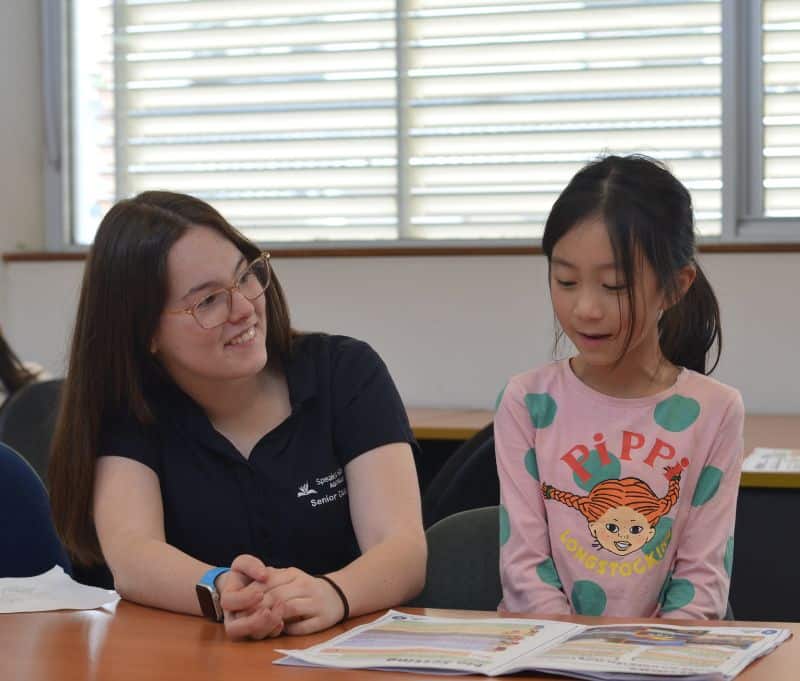The 8 benefits of small class sizes for learning public speaking and debating
13 October 2022
Debate and public speaking classes are growing in popularity, as more and more parents (and kids) realise the importance of mastering these skills. However, with options for after-school activities that range from one-on-one tutoring to large group-based activities with 30+ students, parents are often left wondering which student-to-teacher will have the best outcomes for their child. Here we’ll explore the benefits of small class sizes for learning public speaking and debating.
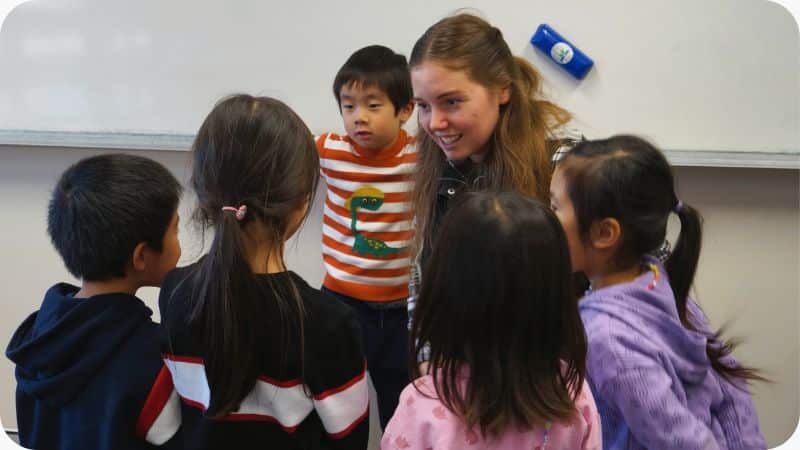
Want to find out more about all the benefits learning public speaking and debating can provide your child? Check out our blog to learn more!
Choosing the right class size for your child
When classes are too big, shy or introverted children may be hesitant to participate, which can limit their progress. That’s why it’s critical to enrol in a public speaking course or a debate club with a small student-to-instructor ratio. You’ll be surprised at how much your child will learn in a supportive environment where they feel comfortable taking risks. So, when choosing a public speaking class for kids, what are the reasons you should select a course with a small student-to-coach ratio?
1. Small class sizes allow for more one-on-one time with the instructor, which is especially beneficial for kids who are new to public speaking or debating
Small class sizes are ideal for beginners who are new to public speaking or debating. In a larger classroom setting, beginners may feel intimidated or nervous about speaking up in front of their peers. This can be the reason kids don’t feel confident while giving a speech at school, where class sizes often range from 25-35 students depending on the school.

Check out our blog to learn more tips for giving an incredible speech!
Small classes are like training wheels for public speaking skills
The big benefit of learning debating and public speaking skills outside school is that your child can escape these overwhelming group environments. With a smaller class size, kids will have the opportunity to receive more one-on-one time with the instructor and get the personalized attention they need to build their public speaking skills, self-esteem and self-confidence.
Additionally, small class sizes create a more intimate and supportive learning environment, where beginners can feel comfortable taking risks and making mistakes. As they gain confidence in their presentation skills, they will be better prepared to take on the challenges of a larger classroom setting.
Learning to speak in front of a small class is like learning to ride a bicycle using training wheels. While it’s technically possible for a child to jump on a regular bike and have a go, they are far more likely to crash and have a traumatising experience that makes them never want to go bike riding again. It’s much more likely your child will enjoy public speaking if they have a chance to dip their toes in the water in a safe and supportive environment where they can build their communication skills, rather than being immediately thrown in the deep end with a big classroom full of students.
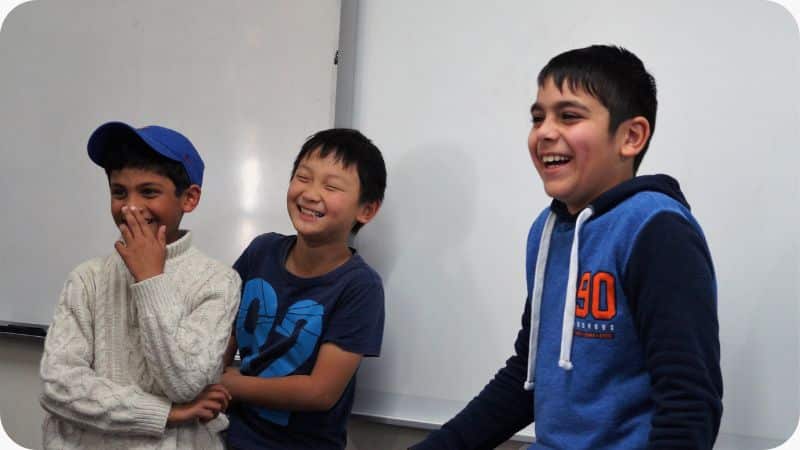
2. In a small class, students have more opportunities to participate in discussions and exercises, which helps them become more comfortable speaking in front of a group
In a small class setting, every student has a better opportunity to practice speaking in front of a group. More inclusion in class discussions and exercises helps kids become more comfortable with speaking up and also provides an opportunity to exercise active listening. This can make all the difference for young people who are shy or introverted.

In smaller classes, everyone can have a turn (or two)!
Teaching children to speak confidently in engaging games and discussions during weekly classes allows them to perform better when the time comes to present their speech, as they have already been chosen to play fun games, answer questions, and be heard by the rest of the group.
Additionally, small classes provide a more inclusive environment where all kids can feel comfortable voicing their opinions and ideas. Ultimately, small classes provide a more supportive environment for kids to powerfully build their communication skills.
3. Students learn best when they are able to observe and interact with their classmates (and their teacher)
Interaction is key for kids to learn best. In a small class size, interaction with classmates is possible in every lesson. Being able to observe and interact with classmates allows for a more well-rounded learning experience as it exposes students to different perspectives and ideas.
Larger classes have fewer interaction opportunities, which can limit student learning. Intimate class sizes provide more interaction opportunities for working in small groups, engaging in class discussions, participating in games and receiving interaction and feedback from other classmates.
However, interaction is not only limited to classmates; it also includes interaction with the teacher. A good teacher will encourage interaction and make sure all students are engaged in the lesson. Therefore, interaction is crucial for kids to learn best and a small class size provides the most opportunities for this to occur.
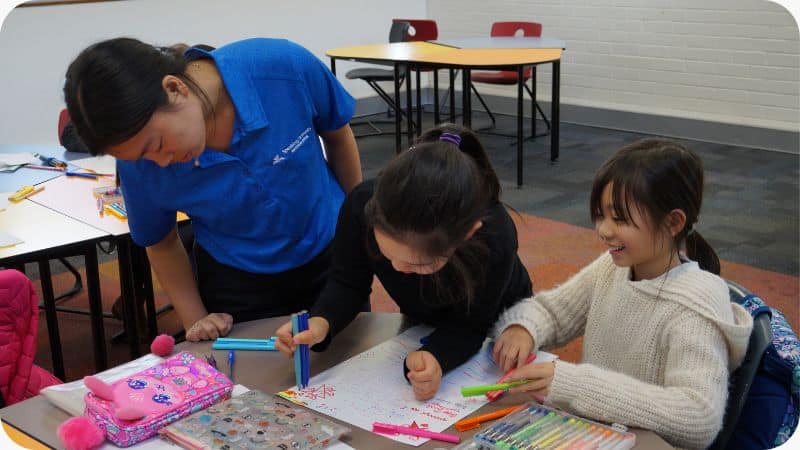
4. Instructors in small classes can give more individualised feedback and assistance to help each student reach their full potential
At Speaking Schools Australasia, keeping our classes small allows our teachers to fill out in-depth personal feedback sheets for every student at the end of the lesson, as well as provide them with feedback after each in-class activity that they can write down in their workbooks. This is beneficial because it allows kids to track their progress and see how they are improving over time as they learn how to communicate effectively.
Getting on a first-name basis
Additionally, small class sizes give instructors the opportunity to get to know each student on a personal level, which is important for providing individualised feedback and assistance. When teachers know their students well, they are able to better understand their strengths and weaknesses and tailor their instruction accordingly. Taking the strain off teachers that can be caused by large class sizes also enables them to have a high-energy and positive interaction with the children they are teaching public speaking. Regardless of the kids’ ages, having enthusiasm instilled by a teacher who has time for them can be a solid building block for their confidence.
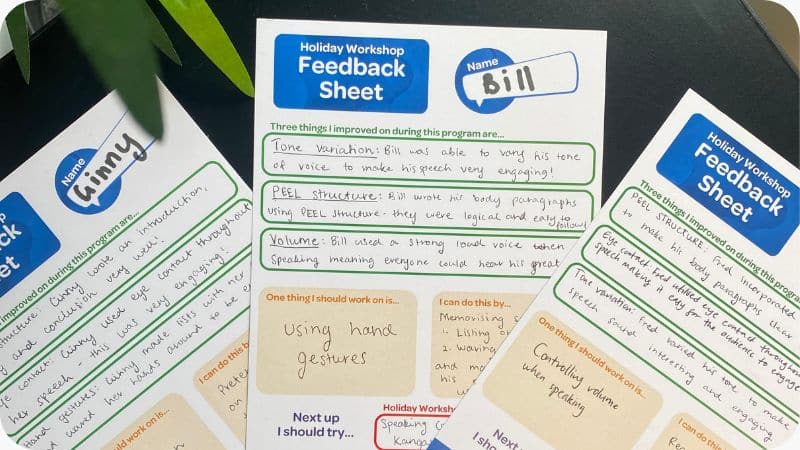
5. When all students are given the opportunity to speak and share their ideas, it fosters a sense of community and teamwork
When all kids are given the opportunity to speak and share their ideas, it fosters a sense of community and teamwork. It also allows for different viewpoints to be heard and for debate to take place in a respectful manner. If everyone is allowed to share their opinion, it lays the foundation for compromise and understanding.
When students feel like they are part of a community, they are more likely to take pride in their work and feel motivated to do their best. Furthermore, a cohesive team is more likely to be successful in collaborative activities like debating. Therefore, it is important that all kids have a chance to share their ideas and be part of the discussion.
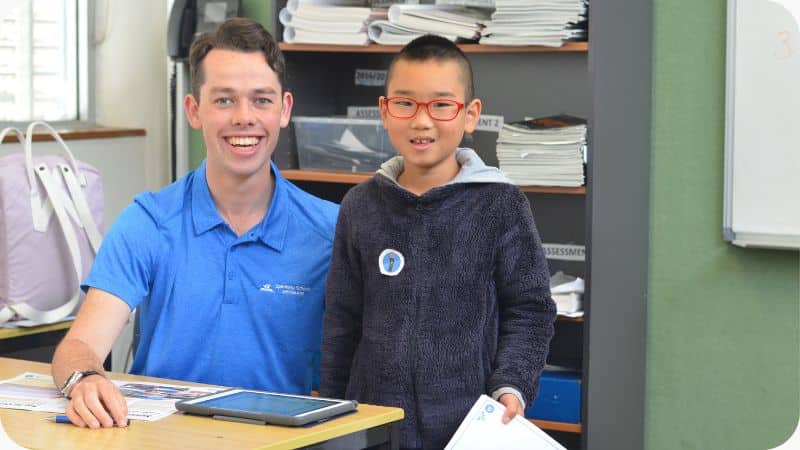
6. Students have the opportunity to ask questions and get help with manner techniques
Being in a smaller class has its perks–particularly for kids who want to get the most out of their manner training. When there are fewer students, teachers have the opportunity to give more individualised attention. This means that kids can ask questions and get immediate feedback on their vocal technique. As a result, they can learn at a pace that is comfortable for them and make progress more quickly.
In addition, instructors can provide coaching on how to use pace, pitch, pause, tone, and volume effectively to improve clarity and communication. For students who are serious about developing their speaking manner, being in a smaller class is definitely an advantage.
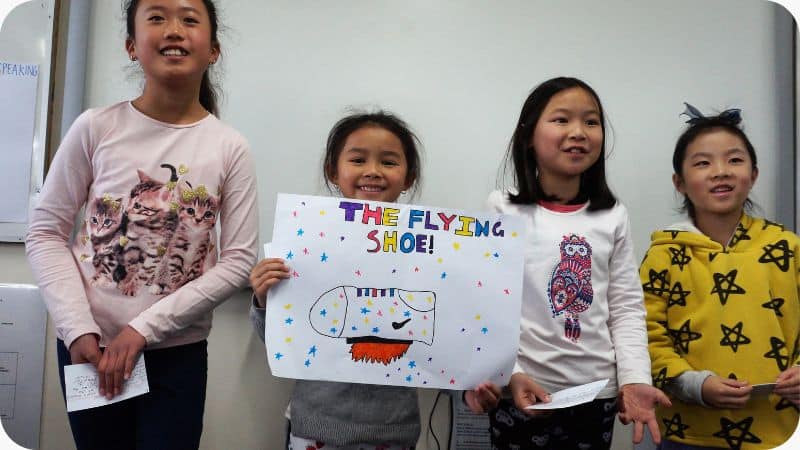
7. Smaller classes are kept fun and interesting with interactive exercises and games
Classes are kept fun and interesting with interactive games and activities which turn the class into a more student-centric environment. These exercises also help students to better retain information as they are actively engaged in the material, rather than passively listening. Games promote teamwork and communication skills, as well as life skills like problem-solving. They allow kids to use their imagination and be creative with their solutions. In addition, games provide an opportunity for laughter and lightheartedness, which is often lacking in more traditional classrooms. Ultimately, games can be a valuable tool in the classroom (and kids have so much fun playing them, they hardly realise they are learning skills with such enthusiasm)!
8. Small classes offer a more intimate learning environment where students can make friends
Everyone knows that feeling of stepping into a classroom for the first time where you don’t know anyone. It can be pretty daunting, especially if the class is large. But in a small class, everyone quickly becomes friends and it becomes much more comfortable to participate.
You’re not just a number in a small class, the teacher gets to know you and can help you if you’re struggling. You’re also more likely to make friends who share your interests. And if you’re ever feeling nervous about speaking up in front of the whole class, in a small group it’s easier to just share your ideas with a few people first. Small class sizes create a safe and calm environment where kids can relax and learn to their fullest potential.

If you’re looking for a place that offers small class sizes for public speaking and debating, look no further than our programs at Speaking Schools Australasia. In our classes, kids have more one-on-one time with the instructor, giving them the opportunity to ask questions and get feedback. Our 1:9 student-to-teacher ratio is unparalleled in similar programs around Sydney and is carefully designed to maximise practical participation opportunities for all students.
They’ll be able to participate in discussions and exercises, which will help them become more comfortable speaking in front of a group. Our coaches can give more individualised feedback and assistance to help each student reach their full potential. Check out our wide variety of courses today, where you can find:
- Classes for kids that want to learn debating and public speaking
- Small class sizes for personalised learning
- Help your child become a confident speaker
- One of the best student-to-teacher ratios in Sydney
- Individual feedback
- Take-home feedback for parent review
- Student-centred learning
- Fun and engaging classroom environment
- Supportive way to build confidence
- In-person and online classes
- Weekly workshops or intensive holiday programs
- Public speaking courses that teach children valuable life skills
- Building confidence from a young age
- Develop skills such as speech writing, body language and eye contact



